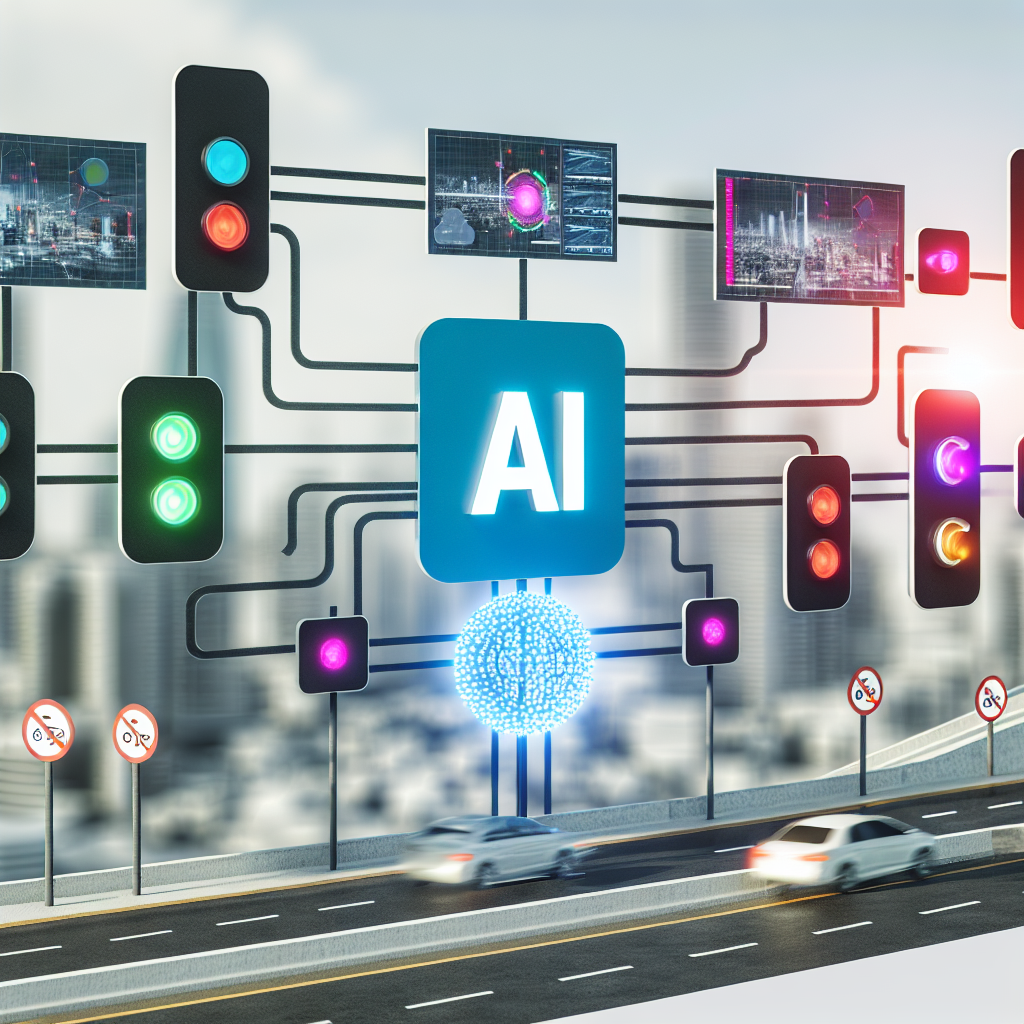-
- AI in Smart Cities for Traffic Management
- Understanding AI in Traffic Management
- Configuration Steps for Implementing AI Traffic Management
- Step 1: Data Collection
- Step 2: Data Integration
- Step 3: Model Development
- Step 4: Real-Time Monitoring
- Step 5: Continuous Improvement
- Practical Examples of AI in Traffic Management
- Best Practices for AI Traffic Management
- Case Studies and Statistics
- Conclusion
AI in Smart Cities for Traffic Management

As urban populations continue to grow, cities face increasing challenges in managing traffic congestion, pollution, and overall transportation efficiency. The integration of Artificial Intelligence (AI) into smart city initiatives offers innovative solutions to these pressing issues. By leveraging AI technologies, cities can optimize traffic flow, reduce travel times, and enhance the overall quality of urban life. This guide explores the role of AI in traffic management within smart cities, providing actionable steps, practical examples, and best practices for implementation.
Understanding AI in Traffic Management
AI technologies, including machine learning, computer vision, and data analytics, can analyze vast amounts of traffic data in real-time. This capability allows for predictive modeling and automated decision-making, which are crucial for effective traffic management. Key benefits of AI in this context include:
- Improved traffic flow and reduced congestion
- Enhanced safety through predictive analytics
- Lower emissions and environmental impact
- Informed urban planning and infrastructure development
Configuration Steps for Implementing AI Traffic Management
To successfully implement AI in traffic management, follow these configuration steps:
Step 1: Data Collection
Gather data from various sources, including:
- Traffic cameras and sensors
- GPS data from vehicles
- Public transportation schedules
- Weather conditions
Step 2: Data Integration
Integrate the collected data into a centralized platform. Use APIs to connect different data sources:
curl -X POST -H "Content-Type: application/json" -d '{"data": "traffic_data"}' http://api.smartcity.com/integrateStep 3: Model Development
Develop machine learning models to analyze traffic patterns. Use historical data to train models that can predict traffic congestion:
from sklearn.model_selection import train_test_split
from sklearn.ensemble import RandomForestRegressor
# Load data
data = load_traffic_data()
X = data[['time', 'weather', 'traffic_volume']]
y = data['congestion_level']
# Split data
X_train, X_test, y_train, y_test = train_test_split(X, y, test_size=0.2)
# Train model
model = RandomForestRegressor()
model.fit(X_train, y_train)Step 4: Real-Time Monitoring
Implement real-time monitoring systems to track traffic conditions and adjust traffic signals accordingly. Use AI algorithms to optimize signal timings based on current traffic flow.
Step 5: Continuous Improvement
Regularly update models with new data to improve accuracy. Conduct A/B testing to evaluate the effectiveness of different traffic management strategies.
Practical Examples of AI in Traffic Management
Several cities worldwide have successfully implemented AI-driven traffic management systems:
- Los Angeles, USA: The city uses an AI-based system called “Adaptive Traffic Control System” (ATCS) that adjusts traffic signals in real-time based on current traffic conditions, resulting in a 20% reduction in congestion.
- Barcelona, Spain: Barcelona employs AI algorithms to analyze traffic data and optimize public transport routes, leading to a 15% increase in public transport usage.
- Singapore: The city-state has implemented a comprehensive AI traffic management system that includes predictive analytics for traffic flow, reducing travel times by 10% during peak hours.
Best Practices for AI Traffic Management
To enhance the performance and efficiency of AI traffic management systems, consider the following best practices:
- Ensure data privacy and security by implementing robust encryption and access controls.
- Engage stakeholders, including local communities and transportation agencies, in the planning process.
- Invest in high-quality sensors and cameras to improve data accuracy.
- Regularly review and update AI models to adapt to changing traffic patterns.
Case Studies and Statistics
Research indicates that cities implementing AI in traffic management can achieve significant improvements:
- A study by the Institute of Transportation Engineers found that AI traffic management systems can reduce travel times by up to 30%.
- According to a report from McKinsey, smart traffic management can lead to a 25% reduction in greenhouse gas emissions in urban areas.
Conclusion
The integration of AI into traffic management systems is a crucial step toward creating smarter, more efficient cities. By following the outlined configuration steps, leveraging practical examples, and adhering to best practices, urban planners and city officials can significantly improve traffic flow, reduce congestion, and enhance the overall quality of life for residents. As cities continue to evolve, the role of AI in traffic management will only become more vital, paving the way for sustainable urban development.